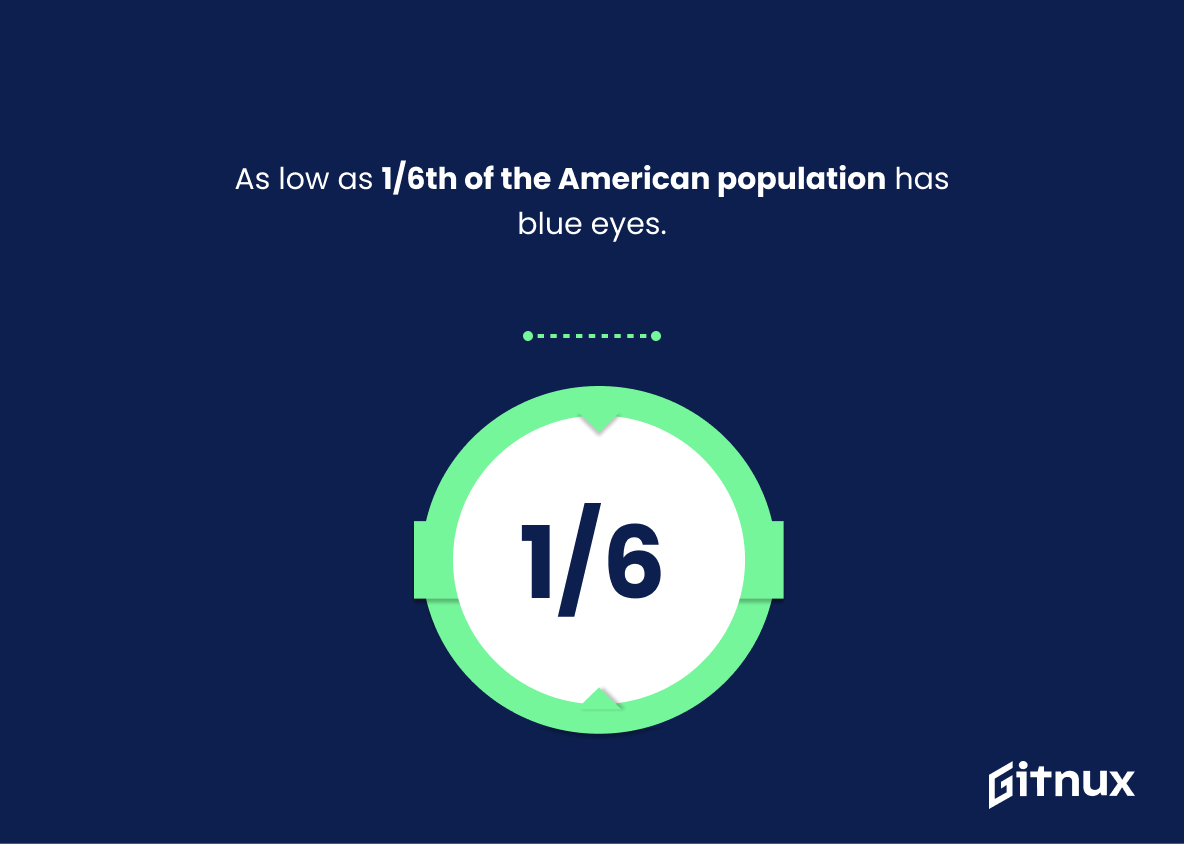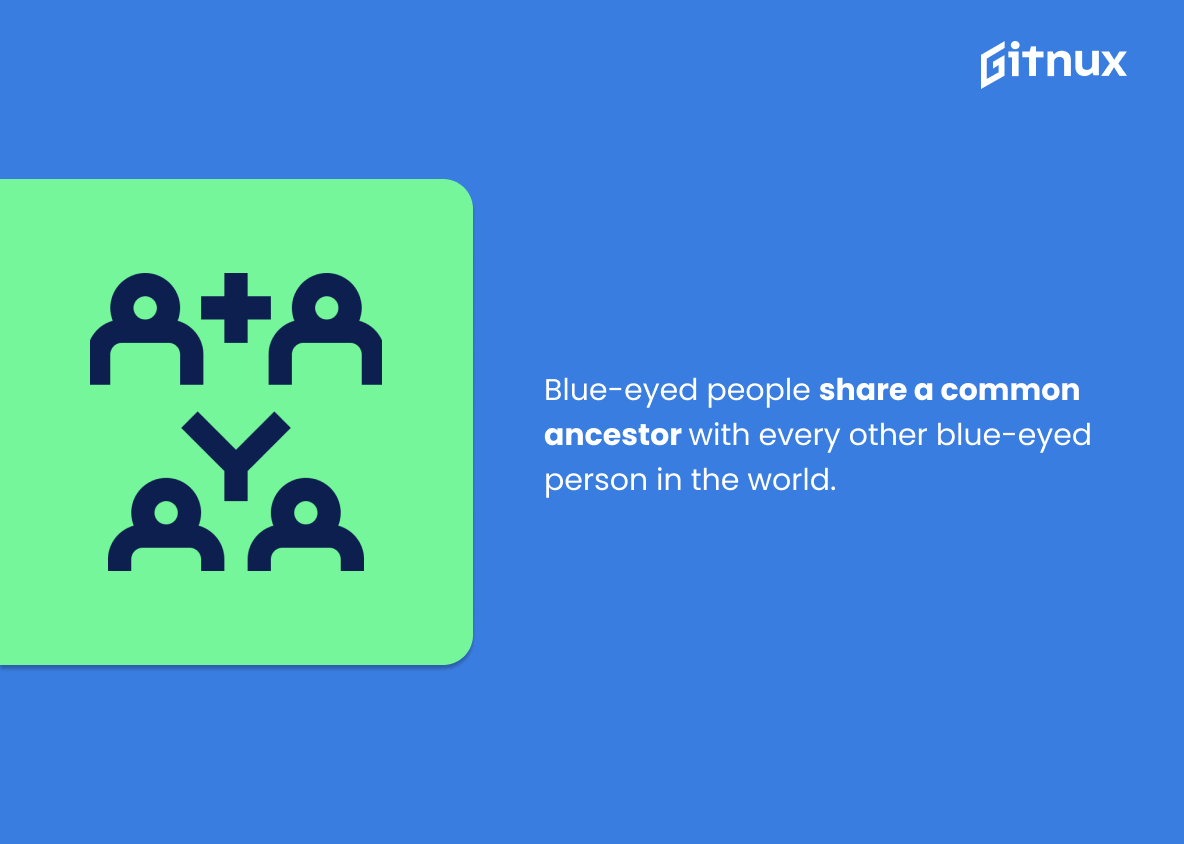Delve in and unveil the captivating world of eye color with our comprehensive guide on Eye Color Statistics. This captivating blog post will not only educate you on the sheer variety and distribution of eye colors globally, but also offer fresh insights into the genetics that guide this intrinsic feature.
From the dominant browns to the rare blues and greens, our exploration is a kaleidoscope of intriguing data and absorbing facts. Discover the celestial poetry hidden in every gaze; color by color, statistic by statistic, as we traverse the fascinating terrain of human eye color.
The Latest Eye Color Statistics Unveiled
Approximately 79% of the world’s population has brown eyes.
Delving into the realm of chromatic chronicles, the eye-opening fact that nearly 79% of the world’s population dons brown eyes adds a fascinating shade to our understanding of ocular diversity. The dominance of this single hue in the global palette expands the narrative beyond mere numbers, painting a portrait of genetic journeys, evolutionary adaptations and regional influences. Essentially, in the grand optical gallery of human eye color, the majority of the canvas is filled with varying tones of brown, thus highlighting its captivating sway in the realm of eye color statistics.
Green eyes are the rarest occurring in only 2% of the world’s population.
Diving into the world of colors that grace the human iris, it’s fascinating but also crucial to highlight an extraordinary hue – the elusive allure of green. Making up a meager 2% of the world’s population, green eyes are like the rare diamonds, scattering light in stunning ways and captivating gazes. In a mosaic of the eye colors, they serve as a standout piece, striking in their scarcity, which adds a unique layer to our understanding of eye color diversity and demographics.
Only 8-10% of humans can boast of blue eyes.
Lending color to our exploration of eye color statistics, the sapphire glint in 8-10% of humans’ eyes sets a striking contrast to the common brown-eyed dominance found in up to 79% of the population. This gem-like statistic becomes even more significant when one considers that blue eyes are not just aesthetically appealing but are also underpinned by a fascinating genetic mystery.
Tracing their peculiar rarity helps researchers unweave the complex tapestry of human genetic variation and evolution. Meanwhile, for marketers, knowing the scarcity of blue eyes aids in targeted advertising – think mascaras enhancing blue orbs or films casting blue-eyed protagonists to exude uniqueness. Therefore, the world behind those azure windows is much more than what meets the eye—it’s part of a riveting genetic, sociocultural and commercial narrative, making it a significant statistic for our discussion.
Brown is the most common eye color in regions like Asia, Africa, and America.
Diving into the world of ocular chromatics, one could hardly overlook the prevalence of brown as the dominant pigment in regions such as Asia, Africa, and America. This fact is pivotal in capturing the global narrative of eye color diversity.
It forms the crux of understanding inherent genetic pointers and patterns, essentially making it a colourful cornerstone of our eye color statistics blog. Visualizing this data not only paints a picture of eye color distribution, but also knits a fascinating story about human genetics, migration, and population dynamics. So, when you’re pondering over the spectrum of human eye colors, remember – brown leads the color parade in these populous continents.
As low as 1/6th of the American population has blue eyes.
Delving into the intriguing realms of ocular hues, the statistic that as low as one-sixth of Americans boast blue eyes adds a fascinating dimension to the exploration of Eye Color Statistics. It spotlights the minority status of the riveting sapphire-eyed population, illuminating their unique place in the kaleidoscope of visage variations.
The insight lends richer depth to the statistical landscape of pigmentation patterns, underscoring the wide-ranging chromatic diversity among the American populace. Consequently, the prevalence of blue peepers mirthfully contradicts the myth of the ‘one-size-fits-all’ approach and underscores genetic variation, inheritance patterns, and evolutionary influences underlying our vision world.
Blue-eyed people share a common ancestor with every other blue-eyed person in the world.
Diving into the vibrant depths of eye color statistics, one stumbles upon an intriguing discovery: the interconnected web of blue-eyed individuals, all tracing their lineage back to a singular ancestor. Unraveling this fascinating truth provides concrete evidence of the power of genetic inheritance, promptly turning the narrative of all blue-eyed individuals into a captivating saga of genetic evolution.
Furthermore, this unusual piece of data enriches the discussion on eye color diversity, offering scientific grounding to the rarity and mesmerizing allure of blue eyes. Truly, it’s a testament to how a simple color palette in the quirk of genetics can weave a shared history for millions worldwide. In a broader sense, it’s a gentle reminder of our intertwined human lineage in the grand tapestry of life.
The percentage of light-eyed people in Estonia is nearly 99%.
The astounding fact that almost 99% of Estonia’s population possesses light eyes imbues our discussion on Eye Color Statistics with a distinctly compelling flavor. It paints Estonia as a unique canvas in the broad spectrum of global eye color patterns, serving as a remarkable example of genetic clustering.
Delving into this eye-opening revelation not only enriches our appreciation for the diverse palette of human phenotypes but it also sets the stage for intriguing questions about genetics, immigration patterns, and potentially hidden evolutionary advantages. In essence, Estonia’s case prompts a fascinating twist in the narrative, breaching the surface of simple piecharts and percentage representations to probe the deeper, multifaceted significance of eye color variation.
Heterochromia, a condition in which a person has two different eye colors, occurs in less than 1% of the population.
Diving into the vast pool of eye color statistics, one cannot help but notice the intriguing rarity of heterochromia. When thinking about eye color, most people’s minds may hover over shades of blue, brown or green. Yet, there’s a fascinating twist in this common understanding as we uncover the fact that less than 1% of the population possess heterochromia- a marvel where they showcase two distinct eye colors. So, why does this unique anomaly demand our attention?
As we unravel the rarity of heterochromia, we enter a realm where normality and convention dissolve into obscurity, daring us to reconsider our understanding of common, often misunderstood, eye color stats. This account adds an element of intrigue and an enigma that enhances not just the quantity, but the quality of our empirical observation and conjures an appreciation for the beauty of biological diversity within the population. Every detail, every difference, and every deviation adds another stroke to the vivid picture that is the rich tapestry of human eye color variations.
Moreover, heterochromia attests to the genetic complexity beneath the surface, reminding us that eye color is not simply a matter of brown, blue or green, but a complex genetic kaleidoscope, waiting to be explored. Its rarity seeds curiosity and an urge to expand the study scope, urging researchers and science enthusiasts alike to fetch answers to the unanswered. Thus, the inclusion of this picturesque note about heterochromia becomes an enticing lure, setting up a stage for an intriguing journey into the intricacies of eye color and its captivating statistics.
In a genetic study conducted on the island of Mykonos (Greece), it was found that 25% of the population has green eyes.
Unveiling the captivating hues of their irises, the inhabitants of Mykonos, Greece provide a profound pigment perspective in our analysis of global eye color statistics. That captivating 25% -a percentage that mirrors emerald tides- breathe life into the rarity of green eyes, illuminating where this distinctive trait finds a welcoming home on the globe.
Their story adds an exciting chapter to our blog post, emphasizing the genetic kaleidoscope of human evolution. This striking Mykonos influence enriches our understanding of eye color diversity, inviting our readers to discover and marvel at the fascinating science behind our gazes.
Approximately half of the inhabitants of the Ribera del Júcar region in Spain have blue or green eyes.
Diving deep into the chromatic world of ocular statistics, an intriguing standout jumps out from Spain’s Ribera del Júcar region: a captivating fact is that roughly 50% of its resident population flaunts either blue or green eyes. This fact is especially riveting since it provides a rich texture to our understanding of the hereditary dispersal of these less common eye colors in a dominantly brown-eyed world.
Moreover, offering a regional lens to this discussion, it amplifies the genetic mosaic that makes up the awe-inspiring tapestry of the human eye color spectrum. So, this nugget of information quite literally paints a clearer picture about eye color prevalence, and how it can fluctuate distinctively according to geographical and genetic variations.
Approximately 17% of individuals in Iceland possess the traits for green eyes, making it the highest in the world.
In the vivid tapestry of Eye Color Statistics, the distinguishing thread of Iceland emerges, unique and profound. An arresting 17% of Icelanders boast green eyes, a hue unrivaled in prevalence by any other nation across the globe. Wrapped within this number lies the striking reality of how genetic mix, evolution, and geographical location craft this visual symphony. Enlightening our understanding further about ocular colors, it shimmers as a valuable cornerstone in the engrossing narrative of human eye color diversity, inheritance, and evolution.
89% of people in the world have brown eyes, making it the most common eye color.
Nestled within the captivating realm of eye color statistics, one gem often outshines the rest. The statistic indicating that 89% of the global population possesses brown eyes isn’t just an inconsequential number, but a profound revelation of brown being the reigning color on the eye color palette.
This statistic, racing far ahead of other contenders, elegantly underlines the supremacy of brown eyes, and punctuates the genetic, geographic, and potentially evolutionary predominance inherent in this specific trait. It forms the centerpiece of any discussion around eye color statistics, creating a contrastive backdrop against which the rarity and uniqueness of other eye colors can be deeply appreciated.
Nearly 99.5% of all humans have brown eyes in East Asia, Southeast Asia, and Africa.
As we delve into the fascinating realm of eye color statistics, this particular nugget of data paints a vivid panorama. It shows how, in a seemingly endless sea of humans, an overwhelming 99.5% of individuals in East Asia, Southeast Asia, and Africa share trademark brown eyes. This high incidence showcases the overpowering dominance of brown hues in these specific regions.
Proffering a clue into the genetic makeup of these vast masses, it highlights the potent play of inheritance. Furthermore, illuminating societal aspects, it underscores an intrinsic overlap in features within these regions. Consequently, in understanding eye color variations globally, this statistic serves as an apt springboard, pathing the wondrous road towards deciphering the intricate ocular color rainbow that envelopes our world.
Conclusion
In conclusion, eye color statistics offer a fascinating insight into our world’s genetic diversity. From the dominant brown appearing in the vast majority of people worldwide, to the less common hues of blue, green, or gray, every eye color tells an intricate story of genetic inheritance. Whether it’s exploring how these colors are spread worldwide or understanding the influence of melanin and genetic factors, these statistics provide a captivating perspective on genetics, heritage, and human variations.
The beauty of these results underscores the marvel that is human diversity, reminding us of the many factors making us distinct and unique. Ultimately, studying eye color statistics is not only about appreciating physical diversity but a testament to the complexity and charm of the human genome.
References
0. – https://www.ghr.nlm.nih.gov
1. – https://www.www.abc.net.au
2. – https://www.www.aclens.com
3. – https://www.www.eupedia.com
4. – https://www.www.researchgate.net
5. – https://www.www.ncbi.nlm.nih.gov
6. – https://www.www.worldatlas.com













